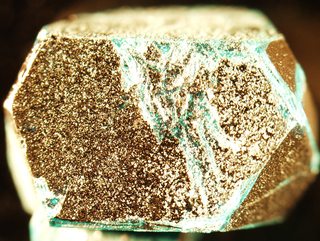MIT researchers discover a new state of matter
 Researchers at the Massachusetts Institute of Technology have discovered a new state of matter with a new state of magnetism called the quantum spin liquid (QSL). Due to such a characteristic as long-range entanglement quantum entanglement, a new discovery can help to achieve significant success in data storage and contribute to the development of new communication systems.
Researchers at the Massachusetts Institute of Technology have discovered a new state of matter with a new state of magnetism called the quantum spin liquid (QSL). Due to such a characteristic as long-range entanglement quantum entanglement, a new discovery can help to achieve significant success in data storage and contribute to the development of new communication systems.In the modern technological world, only two types of magnetism are most widespread: ferromagnetism and antiferromagnetism. The first one has been known to mankind for hundreds of years, and the same property works both in the needle rotating on the compass needle and in the magnets we played with in childhood: the magnetic moments (for example, the charges of ions and electrons) are set by one direction, which causes the appearance of two poles.
 In turn, in antiferromagnets the antiferromagnetic order of the magnetic moments is established, as a result of which the total magnetization is zero. The combination of ferromagnets and antiferromagnets is used to operate spin valves - magnetic sensors in the heads of hard drives.
In turn, in antiferromagnets the antiferromagnetic order of the magnetic moments is established, as a result of which the total magnetization is zero. The combination of ferromagnets and antiferromagnets is used to operate spin valves - magnetic sensors in the heads of hard drives.In the case of quantum spin liquids, a substance is a solid crystal, but its internal magnetic state is a liquid, since it is constantly changing. The magnetic orientation of electrons, their magnetic moment "flows", because they actively interact with their neighbors. Due to this interaction, whose strength is sufficiently large, and quantum effects, the magnetic moments do not remain stationary, and the effect of the long-range interaction of quantum entanglement is observed.
Although at the moment it is very difficult to prove or confirm the existence of this state by measurements, researcher Lee Young believes that in the light of the availability of only theoretical models of physical systems, the data obtained are the most interesting of the existing ones. For the first time, Philip Anderson spoke about the possibility of the existence of quantum spin liquids in 1987, mentioning that such a state of matter can help to create high-temperature superconductors. Lee says the work has been going on for a long time, and only some progress has been made recently.
The specimen itself is a Herbertsmitite mineral crystal. Lee and his colleagues were the first to make a large sample of the material last year, and it took 10 months. Now they are studying its properties. The study of the material was carried out using neutron scattering - Lee's specialty, as well as a neutron spectrometer of the National Institute of Standards and Technology. The result is highly likely to indicate the fractalization of magnetic moments.
Lee stated that the discovery of quantum spin liquid means a possible breakthrough in data storage devices and the development of new forms of magnetic storage and communication. According to the scientist, the new state of matter brings us closer to the creation of high-temperature superconductors - materials that exhibit superconductivity at relatively ordinary temperatures, and not just when cooled to −200 ° C.
Scientific Report
Press Release MIT
